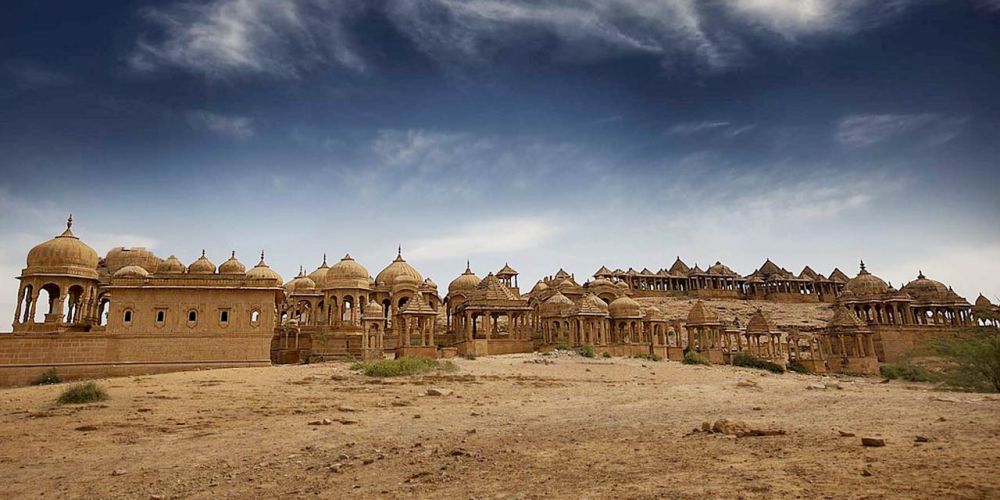

Located approximately six kilometers to the north of Jaisalmer, Bada Bagh, which literally means 'Big Garden', is an exquisite garden complex that boasts a series of royal cenotaphs or chhatris of Maharajas of Jaisalmer. The site's history dates back to the early 16th century when it was commissioned by Maharaja Jai Singh II. However, it was his son, Lunakaran, who oversaw most of the construction of the cenotaphs following his father's death in 1743.
The tradition of erecting a cenotaph in honor of the deceased rulers of Jaisalmer started with the death of Jai Singh II. Each cenotaph within Bada Bagh commemorates a ruler, with inscriptions providing details about the deceased and the reigning monarch at the time of their death. This site not only serves as a memorial ground but also as an important reflection of the history and architectural heritage of the region. These cenotaphs offer a serene and poignant vista against the backdrop of the desert landscape.
Tourism in Bada Bagh saw gradual growth as the splendor of Jaisalmer's havelis, forts, and temples rose to prominence. The remarkable blend of Rajput architecture and the ethereal beauty of these cenotaphs began attracting tourists from all over the world. Visitors often come here to observe the delicate carvings and to enjoy the peaceful ambiance during sunrise or sunset when the golden hues transform the sandstone structures into a radiant spectacle.
The serenity of Bada Bagh also attracted photographers and cinematographers, which in turn amplified tourism as the site's stunning visuals were shared globally. The site has been well-maintained by the Rajasthan Tourism Development Corporation, ensuring that it remains an iconic symbol of Jaisalmer's historical opulence and cultural significance.
In recent years, tourism trends have leaned towards sustainable and responsible travel, impacting how destinations like Bada Bagh are experienced and preserved. There is an increased focus on cultural heritage preservation, and as a result, visitors are often encouraged to engage with the site in ways that respect its historical significance.
Eco-friendly tours and activities that minimize the impact on the environment are becoming common, and local guides are now more frequently used to provide insightful storytelling that deepens tourists' appreciation of Bada Bagh. The drive for authenticity has also led to a boost in local economy as tourists look for traditional crafts and souvenirs made by artisans in nearby villages.
Digital technology has revolutionized the way tourists plan their visits, with virtual tours and interactive maps available for those who wish to explore Bada Bagh before they arrive. Additionally, social media has played a significant role in shaping modern-day travel habits, with platforms such as Instagram and Pinterest serving as sources of inspiration and discovery for potential travelers.
For those planning a visit, Bada Bagh is open throughout the year. However, the best time to experience the allure of the cenotaphs is from October to March when the weather is cooler. Visitors are advised to carry water and sun protection, and consider timing their visit to capture the sunrise or sunset, when the sandstone structures are at their most breathtaking.
Tourists can also experience local cuisine and culture in the nearby city of Jaisalmer, further enriching their visit to this region. With the ongoing trend of immersive and experiential travel, Bada Bagh continues to captivate those looking for a journey steeped in history and beauty.